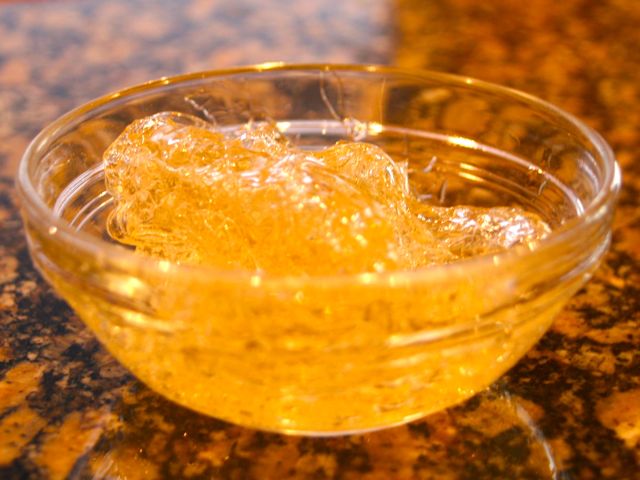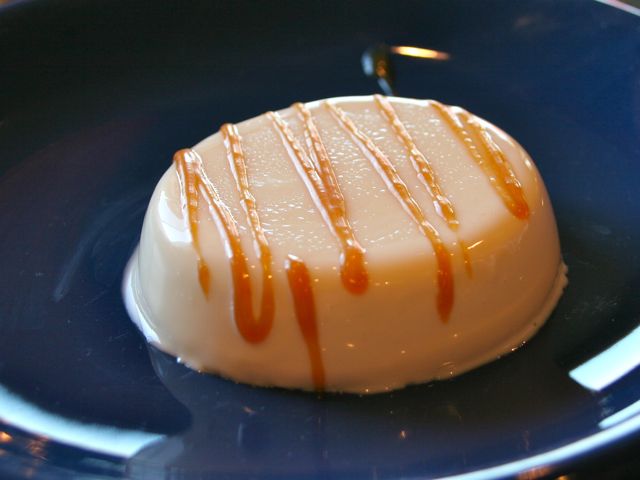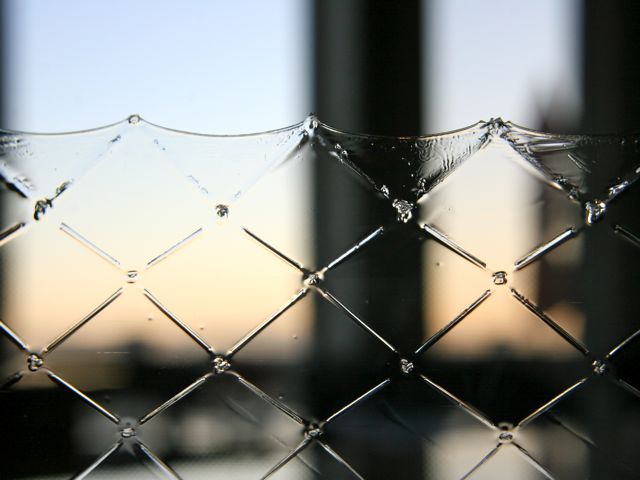
reference-image, l
(article, Hank Sawtelle)
I've been collecting old cookbooks from the 1950s and 1960s (mostly for the kitsch value of the illustrations), and I'm inundated with recipes involving gelatin. One of my favorites is a recent find for a corned beef salad aspic. If you think that sounds appetizing, you haven't seen the photo! Anyway, what's the deal with gelatin? How does it go from hot liquid to firm, shimmying, glistening hubcaps on the Thanksgiving table? Is it really made with animal parts (old horses, bones, etc.)? Just wondering. — Michael H., Los Angeles, California [%image sheetgelatin float=right width=400 caption="Most restaurants use sheet gelatin."] I remember the first time I was served aspic; it was a pretty traumatic experience. I was around eight, and I think suspended tomato seeds were involved — I've blocked out everything else about it. While gelatin can obviously be used for evil, luckily it's also frequently used for awesomeness (suggestions to follow). Gelatin is the unraveled form of a common protein, collagen. Collagen is a tough and tightly bound structural fiber (think rope or cable) found in bones, cartilage, and hides. When heated sufficiently in water, the collagen fibers unwind and disperse as gelatin molecules. The long gelatin molecules interfere with each other to thicken liquids (an effect similar to, but weaker than, starches). When cooled below the gelatin melting point (about 100 degrees Fahrenheit), the gelatin molecules actually start to bond together again, but not as tightly as in their old collagen days. Sufficient gelatin (two to three percent by weight) will “freeze” the cooling liquid into a gel, and then it's Hubcap City, baby! The fun part is that the process is reversible, so gelatin returns to liquid form when heated to about 100 degrees — for example, in your mouth. Gelatin does come from animal parts, so it's not vegan-friendly. Horses aren't involved in commercial production (you're thinking of the glue factory?), but cows and pigs certainly are. There's also kosher gelatin made from fish bones. Cooks extract gelatin from animal parts whenever they make a stock or a long-simmered soup or stew with bones. [%image reference-image float=right width=400 caption="Gelatin sheets turn into a jellyfish-like blob when bloomed in cold water."] Vegan dishes can be gelled with vegetable extracts such as agar agar (from seaweed), but direct substitution can be tricky. I've tasted some pretty great vegan marshmallows, but the ingredient list contains a medley of plant gums that would probably be tricky to perfect at home. Store-bought gelatin comes in two forms: powder and sheets (or “leaves”). Most consumer recipes call for powdered gelatin, but most restaurants use sheets. In either case, the gelatin must be “bloomed” in cool water before being dispersed in hot water. The sheets are fun to work with, as they turn into a jellyfish-like blob when bloomed in cold water. (They also make really cool windows for gingerbread houses when cut to size.) Converting between sheets and powder can be confusing because the sheets are available in different gelling strengths, but one sheet per teaspoon (or four sheets per “packet”) of powdered gelatin is a good rule of thumb for most recipes. There are a couple of fun and easy ways to explore gelatin that don't involve Jell-O molds or Cool Whip. (See the sidebar for recipes.) The easiest is panna cotta (Italian for “cooked cream”), which is a simple (unbaked!) custard that doesn't contain (and therefore doesn't taste like) eggs. It's very easy to heat cream with sugar, gelatin, and flavorings (optional), refrigerate in single-portion sizes, and then turn the custards out onto dishes for a fancy-looking dessert. It tastes like . . . cream. So use good cream. [[block(sidebar). h1.Featured recipes]] Marshmallows are only slightly more difficult, but totally worth it. Sugar and corn syrup (added to prevent crystallization; you can also use invert-sugar syrup) are cooked and added to bloomed gelatin, then whipped until fluffy. When the mixture cools, the gelatin sets and traps air bubbles for a light and sweet treat. Store-bought marshmallows are dull and gummy by comparison. Give thanks, therefore, to the animals that gave their lives so that we might enjoy delicious s'mores. p(bio). Based in Portland, Oregon, Hank Sawtelle has engineering, legal, and culinary degrees.

reference-image, l

pannacotta, l

sheetgelatin, l

newsletter-image, l